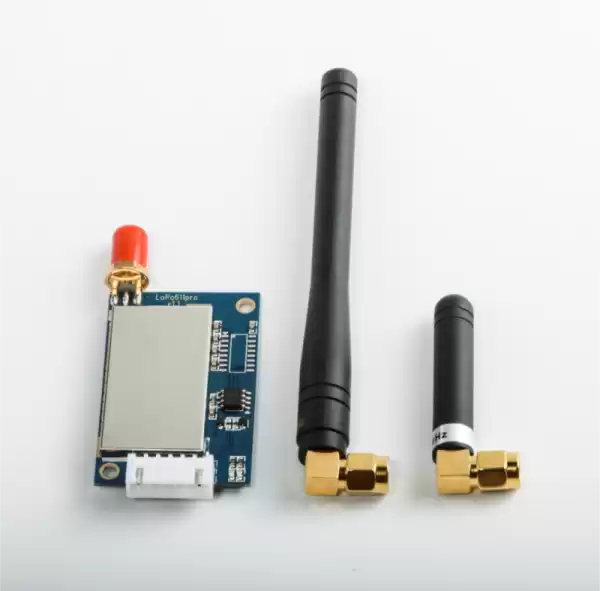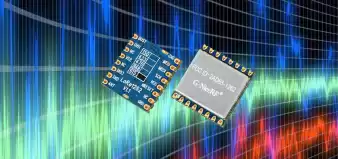How to choose antenna for wireless transceiver module?
Sep . 2024
The antenna is one of the most important accessories in the wireless transceiver module. Its gain effect can greatly improve the transmission distance and signal strength of the wireless transceiver module. Therefore, it is very important to choose a suitable antenna for the wireless transceiver module. But there are various types of antennas on the market, how do we choose the antenna of the wireless transceiver module?

1. Frequency
Wireless transceiver modules all have operating frequencies, such as: 433MHz, 868MHz, and so on. The antenna and the wireless transceiver module also have a working frequency, so when we choose the antenna, the frequency of the antenna must be the same as the frequency of the wireless transceiver module; otherwise, the gain effect of the antenna will become very poor, and the difference will lead to the radiation range of the antenna. It becomes smaller, resulting in a shorter transmission distance.
2. Gain value
The gain value is a very important parameter of the antenna. It is calculated in dBi, and the gain value is calculated as a positive value. When the gain value is higher, the gain effect on the wireless transceiver module is higher, so when we choose the antenna, Regardless of other parameters, choosing an antenna with a higher gain value will bring more help to the wireless transceiver module.
3. Standing wave ratio
Standing wave ratio refers to the ratio of standing wave antinode voltage to valley voltage amplitude, also known as standing wave coefficient and standing wave ratio. It is mainly used to describe the matching situation of the antenna. When the standing wave ratio is equal to 1, it means that the impedance of the feeder and the antenna are completely matched, which is the most ideal situation. When the standing wave ratio is greater than 1, it means that some radio waves will be reflected back and become heat, causing the feeder to heat up. The reflected radio waves may generate a relatively high voltage at the output port of the wireless transceiver module, which may damage the transmitter module. occur. However, the standing wave ratio of most antennas on the market is greater than 1, but less than 1.5. Some inferior antennas have a standing wave ratio greater than 1.5 or even higher. The higher the standing wave ratio, the more electric waves are reflected, the more heat will be caused, and the greater the probability of damage to the module. So when we choose an antenna, we must pay attention to the standing wave ratio of the antenna. If conditions permit, it is safest to check it by ourselves.
4. Working environment
The working environment of each project is different, so the antenna used will also be different. If the environment is bad and there are many sources of interference, NiceRF Wireless recommends choosing external antennas with high gain effects such as rod antennas, sucker antennas, and Yagi antennas. High gain antennas can increase a certain degree of anti-interference ability. If you want to consider installing the wireless transceiver module and antenna together inside the device, you can consider using built-in antennas such as spring antennas and FPCs. The difference between internal and external antennas can be referred to in detail: https://www.nicerf.com/articles/detail/what-are-the-internal-antennas-and-external-antennas-of-the-wireless-transceiver-module.html
Special Note:
- High-power wireless transceiver modules cannot use small-gain antennas, such as spring antennas, FPC antennas, and other built-in antennas with small gains, etc. Because high-power wireless transceiver modules use small-gain antennas, the module signal will not radiate. Going out will cause the transmission effect to deteriorate and cause problems such as shorter distances.
- Low-power wireless transceiver modules can use high-gain modules, and the higher the gain antenna, the better the performance of the module. For example, the RF4431 wireless transceiver module of NiceRFWireless 20mW can also use a large-volume, high-gain antenna such as a Yagi antenna.
The higher the location of the antenna, the more advantageous it is for signal transmission and the longer the transmission distance. The antenna installation area should be kept open and far away from interference sources such as metals and buildings.
 +86-755-23080616
+86-755-23080616
 sales@nicerf.com
sales@nicerf.com
Website: https://www.nicerf.com/
Address: 309-315, 3/F, Bldg A, Hongdu business building, Zone 43, Baoan Dist, Shenzhen, China


 English
English







